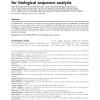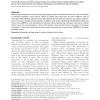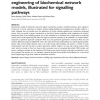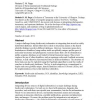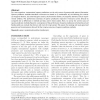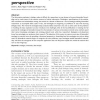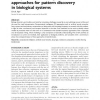BIB
2008
14 years 21 days ago
2008
Programmatic access to data and tools through the web using so-called web services has an important role to play in bioinformatics. In this article, we discuss the most popular ap...
BIB
2008
14 years 21 days ago
2008
Biobanks are well-organized resources comprising biological samples and associated information that are accessible to scientific investigation. Across Europe, millions of samples ...
BIB
2008
14 years 21 days ago
2008
Quantitative models of biochemical networks (signal transduction cascades, metabolic pathways, gene regulatory circuits) are a central component of modern systems biology. Buildin...
BIB
2008
14 years 21 days ago
2008
A major challenge facing biodiversity informatics is integrating data stored in widely distributed databases. Initial efforts have relied on taxonomic names as the shared identifi...
BIB
2008
14 years 21 days ago
2008
Short tandem repeats, specifically microsatellites, are widely used genetic markers, associated with human genetic diseases, and play an important role in various regulatory mecha...
BIB
2008
14 years 21 days ago
2008
For most organisms, computational operon predictions are the only source of genome-wide operon information. Operon prediction methods described in literature are based on (a combi...
BIB
2008
14 years 21 days ago
2008
The availability of hundreds of complete bacterial genomes has created new challenges and simultaneously opportunities for bioinformatics. In the area of statistical analysis of g...
BIB
2008
14 years 21 days ago
2008
The information explosion in biology makes it difficult for researchers to stay abreast of current biomedical knowledge and to make sense of the massive amounts of online informat...
BIB
2008
14 years 21 days ago
2008
Biology, chemistry and medicine are faced by tremendous challenges caused by an overwhelming amount of data and the need for rapid interpretation. Computational intelligence (CI) ...
BIB
2008
14 years 21 days ago
2008
The accuracy and scalability of multiple sequence alignment (MSA) of DNAs and proteins have long been and are still important issues in bioinformatics. To rapidly construct a reas...
